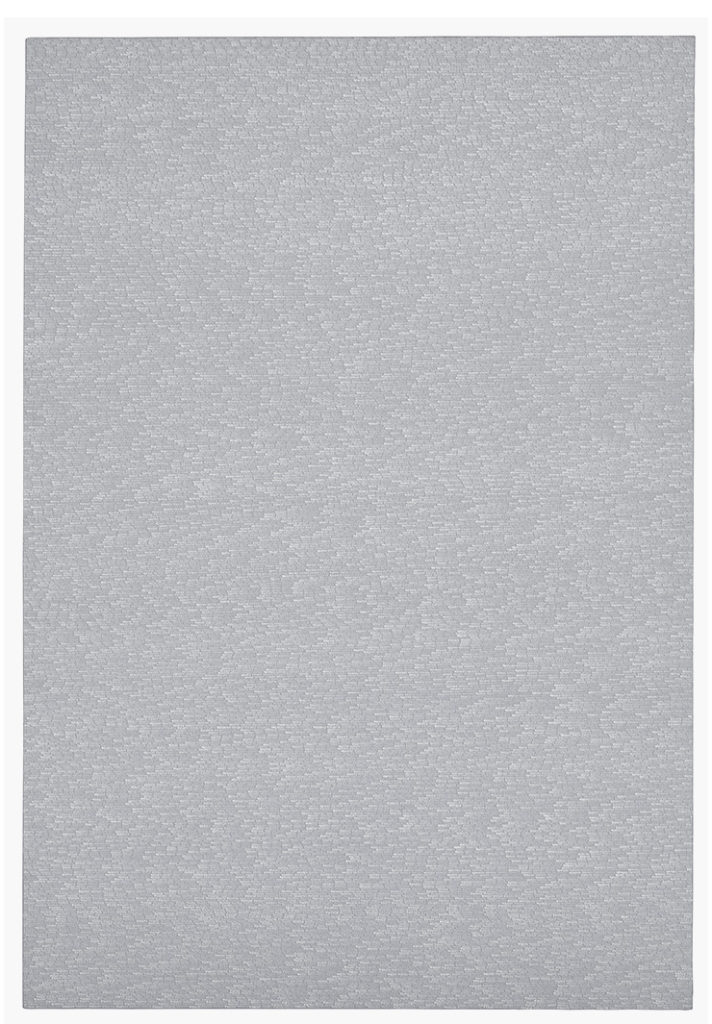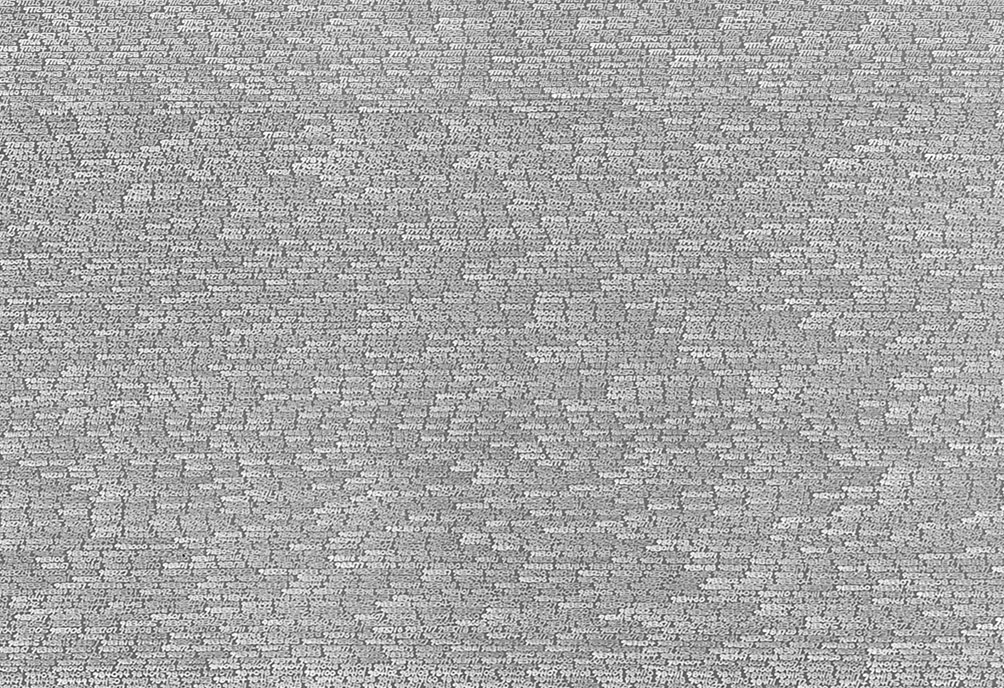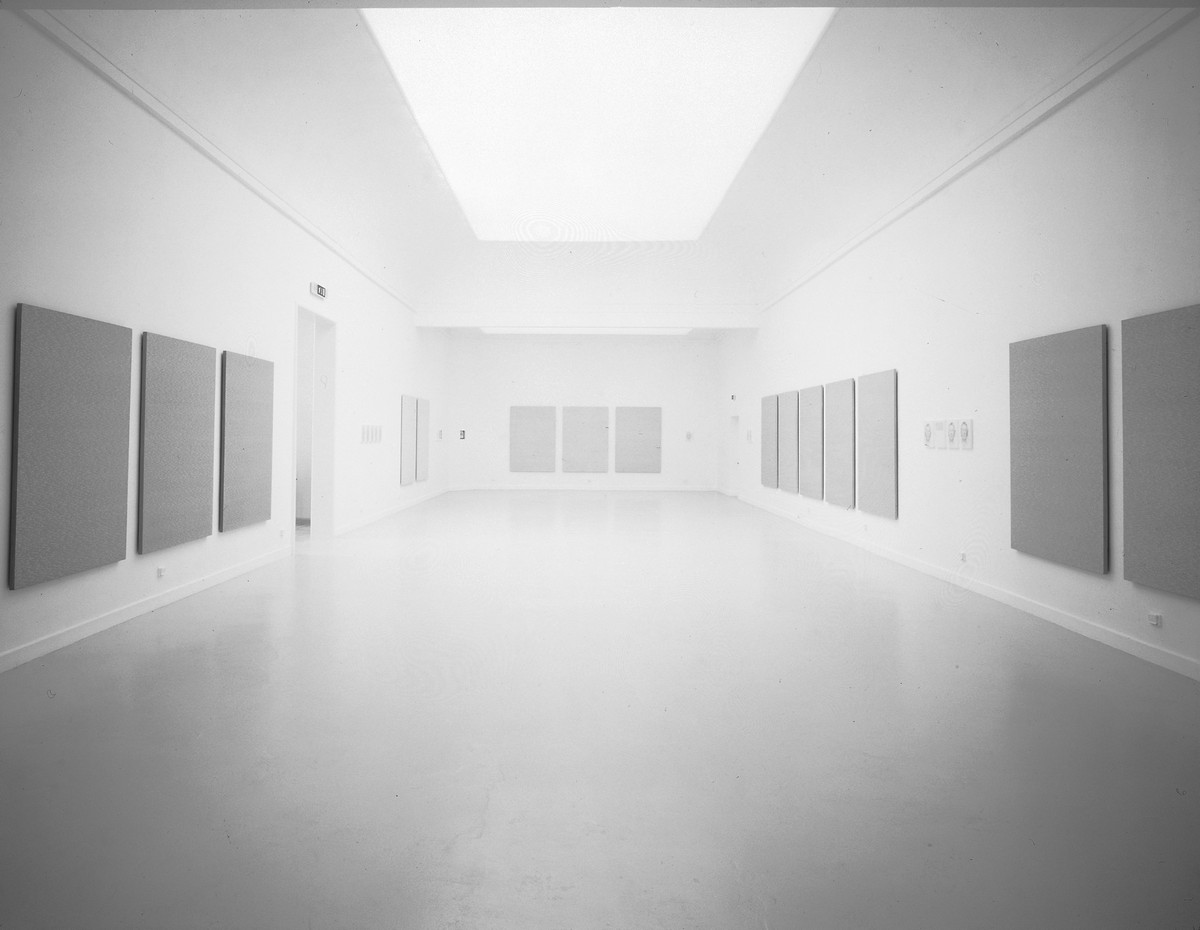OPAŁKA 1965/1-∞
Roman Opałka
Roman Opałka made his artistic debut in the 1960s – during the late Duchamp period, when he only appeared to be interested in the game of chess, but also at the time of the particularly dynamic presence of ‘Fluxus’. These were years of relative economic stability, also marked by increasingly frequent acts of contestation, inspired by faith in the possibility of discovering the ‘new’ and in a continuous race of paradigms towards the destruction of the limitations of art. Roman Opałka started his career in Poland, a country whose economic stability derived from an artificial freeze on prices and in which contestation was not yet considered lawful. In other words, he made his debut far from the centres of artistic production and from the commercial art market. He lived in the luxury of a disinterested poverty, allowing him to develop his creative ability. He did not concentrate on overcoming the formal constrictions of art, on the struggle against conventionality in painting. Instead, he searched for visual equivalents of concepts such as ‘multiplicity’ or ‘multitude’, marked by the human imagination of the infinite, whose only calculation is made through time. To grasp the concept of time, however, some kind of measurement is necessary. Conventional measurement is made by the regular rhythm of clock mechanisms. This is a monotonous, objective measurement which only brings figures into our world consciousness. The movement of the hands of the clock seems infinite in its repetitivity. Effective measurement is made through transformation. Only transformation demonstrates the real workings of time. Chinese emperors did not allow modifications to be made to their environment since, in the monotonous duration of time, their lives appeared eternal. In this way they could taste the illusion of immortality.
In contrast with what occurred in ancient China, Opałka decided to eternalise transformation. He decided to find a visual equivalent of the measurement of his own existence in the comparison between his limitations and the infinite. Limitation signifies measurability, and therefore the possibility of a calculation. Calculations are made with figures. By writing numbers we arrive at a visual and material proof of the passage of time which corresponds to our biological lifetime. In 1965 the artist initiated a process whereby he recorded the rhythm of his life through the writing, using a brush, of numbers on the canvas of a painting, accompanied by their recitation. He simultaneously started to record the process of transformation through the photographic immortalisation of his own face. The intensity of the white on the paintings increases with the number of white hairs on their creator’s face. The movement, juxtaposing the successive Details, or the photographs, seems almost unnoticeable. We do not notice changes on the faces of our family members if we see them every day. Only a break in the relationship – a break in time – can highlight this transformation. Opałlka does not assist time. He does not attempt to accelerate the rhythm with his careful work, nor with any change in his behaviour in front of the camera. His face changes naturally – biologically – with the increase in the numbers registered on an increasingly white background.
The numbers, nevertheless, have their own magic; their slow progress mirrors the paroxysmal rhythm of the growth and maturation of the man. In infancy it is easy to double one’s age arithmetically, whereas in old age this is impossible. The white lines of the figures take on metaphysical properties, tending, ever more slowly, towards infinity. However, the rhythm of signs recorded by the hand of man is not mechanical. White shows a graded intensity, depending on the quantity of paint and the pressure of the brush. The painting becomes vibrant, according to our own aesthetic needs in its movement towards the forgotten category of beauty. This work can be compared to the ‘Unismo’ of Władysław Strzemiński, whose paintings, in the same way as Opatka’s, were not produced for purely aesthetic motives. Their shape, rhythm and colour were created as the result of a detailed study of the characteristics perceived by the human eye, the influence exerted by line and colour on the psyche. If, however, the paintings of Strzemiński were the result of the artist’s studies of the theory of perception, the Details of Opałka are the effect of a process of identification of the artist with his own work. Consequently, the result is a sensitive recording of the biological energy of the artist and the man through a well-defined face, intonation and pronunciation.
None of the canvases consist in autonomous paintings in themselves. The composition process of the individual Details is as continuous as the process of living. It is as continuous as the process of calculation. The higher the numbers, the more limited their presence appears on the canvas, the more slowly their values increase. Arriving at the number 5,000,000 took thirty years of the artist’s life. Once he has arrived at the seven-figure number 7,777,777, the painting will become completely white. ‘On the immense extremity of black and white I am realizing the gradual passage of a single existence – colour becomes mortally emotive’ – he wrote recently. This ‘mortal’ emotivity of colour constitutes a sign of escape from the limited towards the infinite.
Anda Rottenberg
- YEAR1995
- CATEGORY Biennale Arte
- EDITION46
- DATES11.06 – 15.10
- COMMISSIONERAnda Rottenberg
- CURATORAnda Rottenberg
Displayed works

Roman Opałka, Opałka 1965/1-∞, Acrylic on canvas, 195 x 135 cm. Private collection

Roman Opałka, Opałka 1965/1-∞, Detail, Acrylic on canvas, 195 x 135 cm. Private collection

Roman Opałka, Opałka 1965/1-∞, Detail. Private collection

